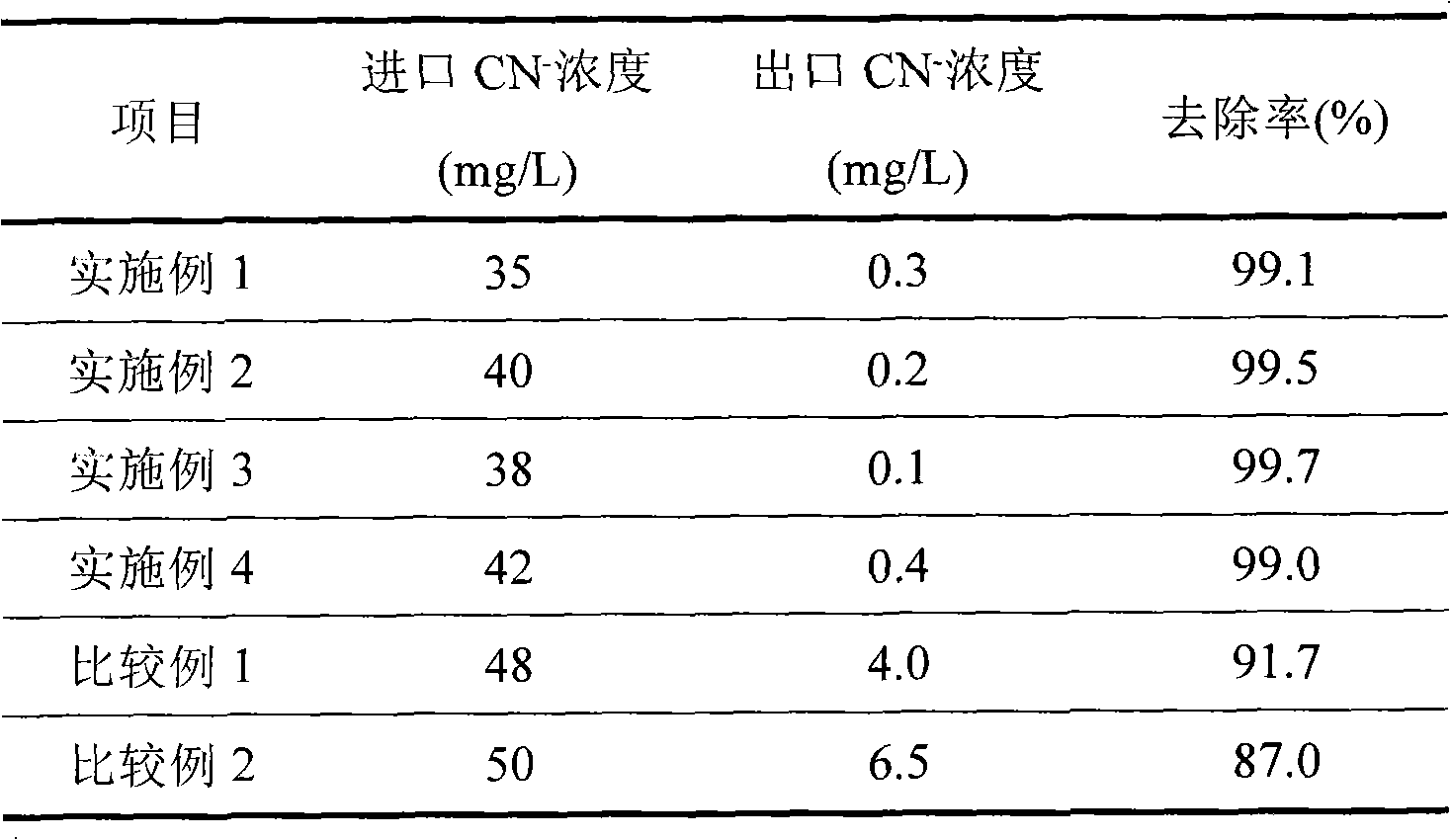Method for preparing ozone catalytic oxidation catalyst for treating cyanide waste water
An ozone catalytic oxidation and catalyst technology, applied in physical/chemical process catalysts, metal/metal oxide/metal hydroxide catalysts, chemical instruments and methods, etc., can solve the problem of high cost and achieve the effect of simple preparation steps
- Summary
- Abstract
- Description
- Claims
- Application Information
AI Technical Summary
Problems solved by technology
Method used
Image
Examples
Embodiment 1
[0028] Take 226gCu(NO 3 ) 2 ·3H 2 O, 379gFe(NO 3 ) 3 9H 2 O, 174gSnCl 4 ·5H 2 O, add 1.5kg of water to make a solution. Get 5.4kg of amorphous alumina (produced by CNOOC Tianjin Chemical Research and Design Institute, trade name AKF101), spray into the prepared solution and carry out rolling granulation until the particle size is 3mm, stop when the particle size is 3mm, maintain at 101°C for 20hr, and dry at 110°C for 4hr. Calcined at 550°C for 3 hours to obtain an ozone catalytic oxidation catalyst. The specific surface area and active component content of the finished catalyst are listed in Table 1.
[0029] Catalyst performance evaluation is achieved by the following devices:
[0030] Reactor: fixed bed reactor
[0031] Catalyst loading volume: 100ml, filling aspect ratio is 4:1
[0032] Temperature: room temperature
[0033] Residence time: 20min
[0034] Ozone generation: 4.5g / hr
[0035] Wastewater source: selected from an acrylonitrile factory wastewater, ...
Embodiment 2
[0038] The configuration of the active component solution is copper nitrate, ferric nitrate, and tin chloride equivalent to 0.5% of the mass of the amorphous alumina carrier, and the rest of the catalyst preparation steps are the same as in Example 1. The specific surface area and active component content of the finished catalyst are listed in Table 1.
[0039] The catalyst was tested as in Example 1, and the evaluation results of the catalyst are shown in Table 2 and Table 3.
Embodiment 3
[0041] The configuration of the active component solution is copper nitrate, ferric nitrate, and tin chloride, which are equivalent to 3.0% of the mass of the amorphous alumina carrier, and the rest of the catalyst preparation steps are the same as in Example 1. The specific surface area and active component content of the finished catalyst are listed in Table 1.
[0042] The catalyst was tested as in Example 1, and the evaluation results of the catalyst are shown in Table 2 and Table 3.
PUM
| Property | Measurement | Unit |
|---|---|---|
| specific surface area | aaaaa | aaaaa |
| particle size | aaaaa | aaaaa |
| particle size | aaaaa | aaaaa |
Abstract
Description
Claims
Application Information
 Login to View More
Login to View More - R&D
- Intellectual Property
- Life Sciences
- Materials
- Tech Scout
- Unparalleled Data Quality
- Higher Quality Content
- 60% Fewer Hallucinations
Browse by: Latest US Patents, China's latest patents, Technical Efficacy Thesaurus, Application Domain, Technology Topic, Popular Technical Reports.
© 2025 PatSnap. All rights reserved.Legal|Privacy policy|Modern Slavery Act Transparency Statement|Sitemap|About US| Contact US: help@patsnap.com



